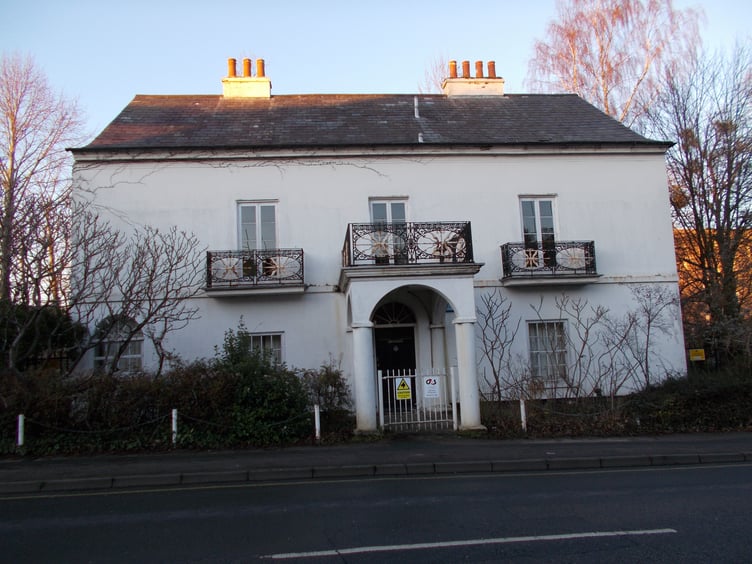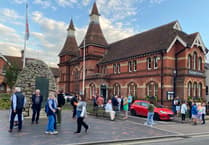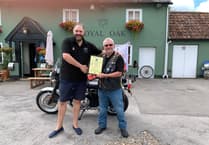Culverton House stands alongside Lower Turk Street - an unusual building for Alton. Covered in white stucco and having elegant balconies, it would be better suited to a Mediterranean situation rather than here.
The first mention of a dwelling on this site found so far dates from 1707.
In 1825 it came up for auction and was described as “a neat dwelling house”.
Also for sale were three cottages and a tanyard which was “bounded by a well supplied stream of excellent water” and an “excellent meadow, called Culver Mead”.
Culver is an old word for a pigeon or, possibly, a culvert.
The new owner was Henry Blanckley Rogers, who had married local girl Charlotte Ann Whiting in Alton in 1816. Henry was then a gentleman aged 33 and his family had military connections. One of the first things that the couple did was to rebuild the house in about 1827 and name it Culverton House.
Henry and Charlotte stayed in their new home with its beautiful walled garden until at least 1832. They then moved to Devon and leased the property. Henry wrote his will in 1841 and left everything to his “beloved wife” provided that she did not remarry. His property included “the Irish Town Buildings south and north sides of Parliament Ramp in Irish Town in Gibraltar” which was a part of the family estate. Money was to go “for the repayment of the expense of my building the said two houses and premises” there. Had Henry been planning to move there?
Could a familiarity with the architecture of Gibraltar have influenced the design of Culverton House? The front door surround, arched porch and full-length first-floor windows opening on to balconies are all similar to the old buildings in Irish Town. Was this the reason that Culverton House became known as Gibraltar House for a while about 20 years later?
The new occupants of the Alton property were the Durells, who originally came from Jersey. John Durell obtained a licence to be Curate of Alton with the stipulation that he had to live in the parish.
In July 1841, Culverton House came up for auction:
“A capital freehold residence, with excellent gardens and offices, newly and substantially built, presenting a most desirable investment.
“A most delightful residence, built regardless of expense, with thick brick walls, stuccoed, the interior finished in a superior style, replete with every possible comfort for the domicile of a family, situate close to the cheerful town of Alton, which has long been proverbial for the salubrity of its air, and the loveliness of the surrounding scenery.
“The house contains nine bed chambers with dressing rooms, an elegant drawing room, dining room, breakfast room, most ample, convenient, and well arranged offices, double coach-house, three-stall stable, and the whole well supplied with water.
“Extensive pleasure and kitchen gardens, enclosed by brick walls and iron railings and gates, adorned by a spacious conservatory, with grape vines in full bearing, hot beds, flower borders.
“As a residence it offers many temptations, the situation being both lovely and healthy, and the journey to and from London is accomplished very readily daily, allowing several hours to transact business.”
The Red Rover coach called at The Royal Oak, on the corner of Turk Street, every afternoon except on a Sunday, but would not have reached London until the evening. The nearest railway station was 11 miles away at Winchfield, but that was not easy to access. The best way to London would have been to take a coach from Alton to Farnborough station, from where the train left every morning, except on Sundays, at 9am.
Later occupants included members of the Crowley family of brewers, foundry owner Alfred Hetherington, and the Pechells. Culverton House then became part of the property that was developed for Harp Lager when the “extensive pleasure and kitchen gardens” were sadly swept away. It is now due to become flats.
Jane Hurst





Comments
This article has no comments yet. Be the first to leave a comment.